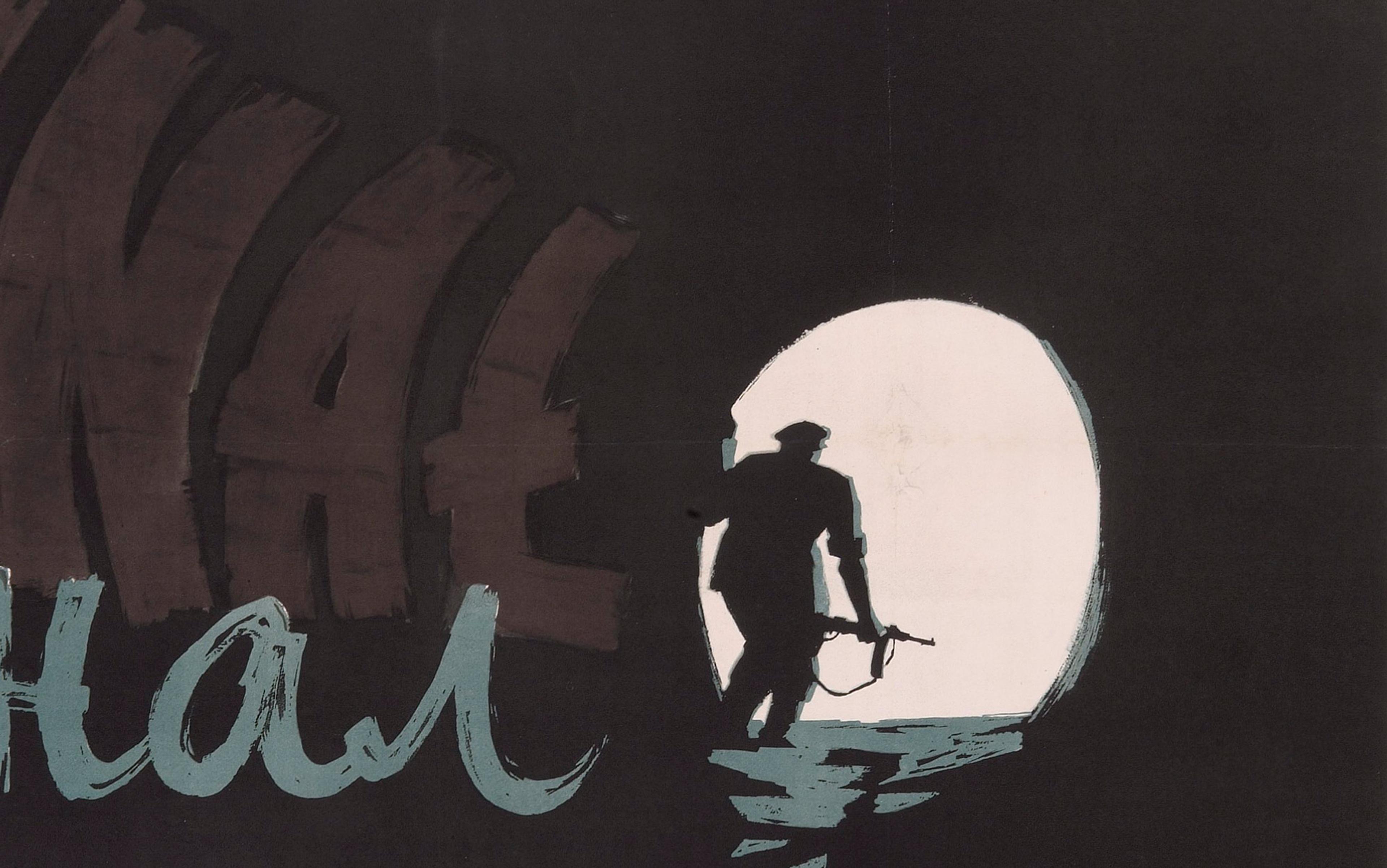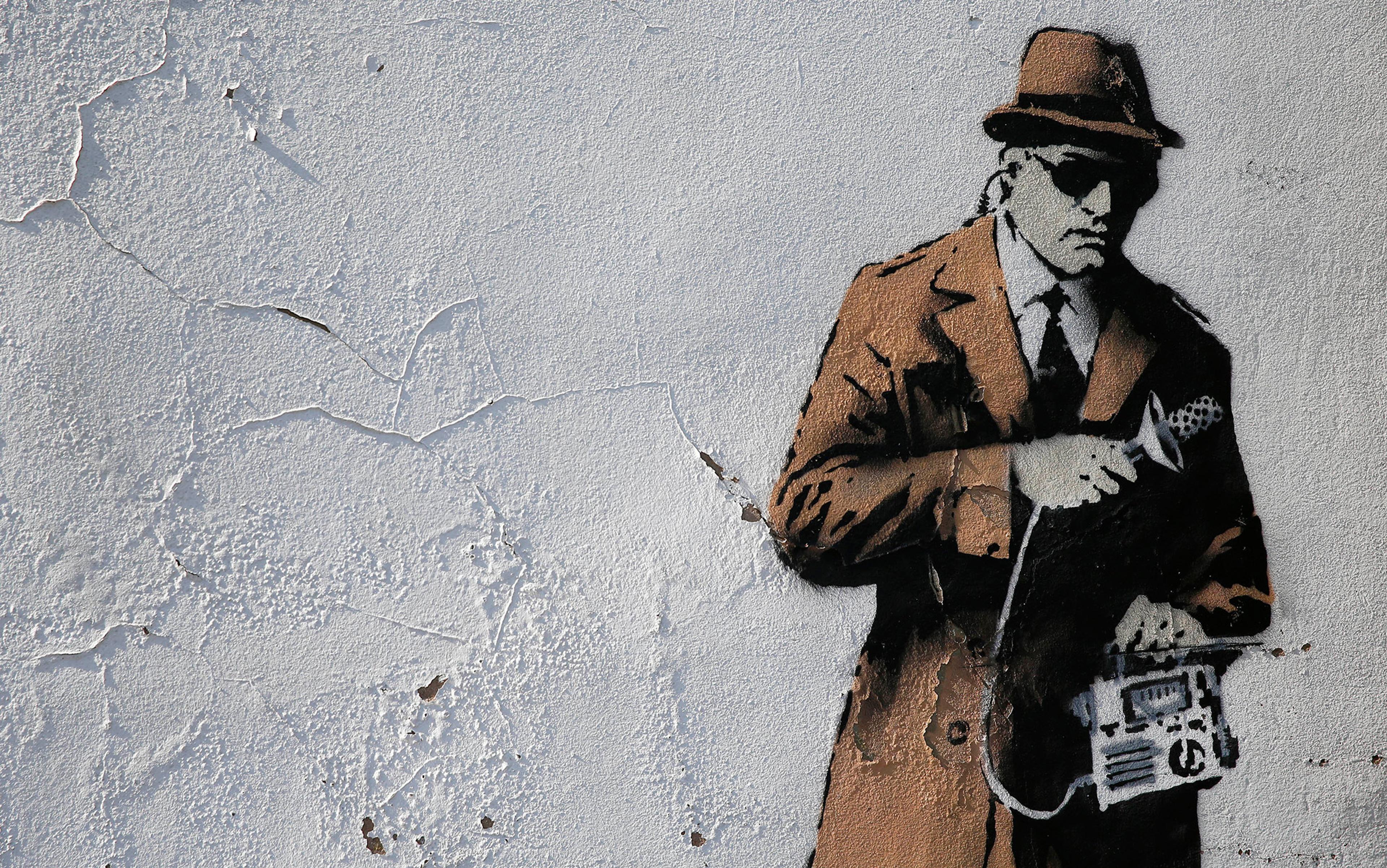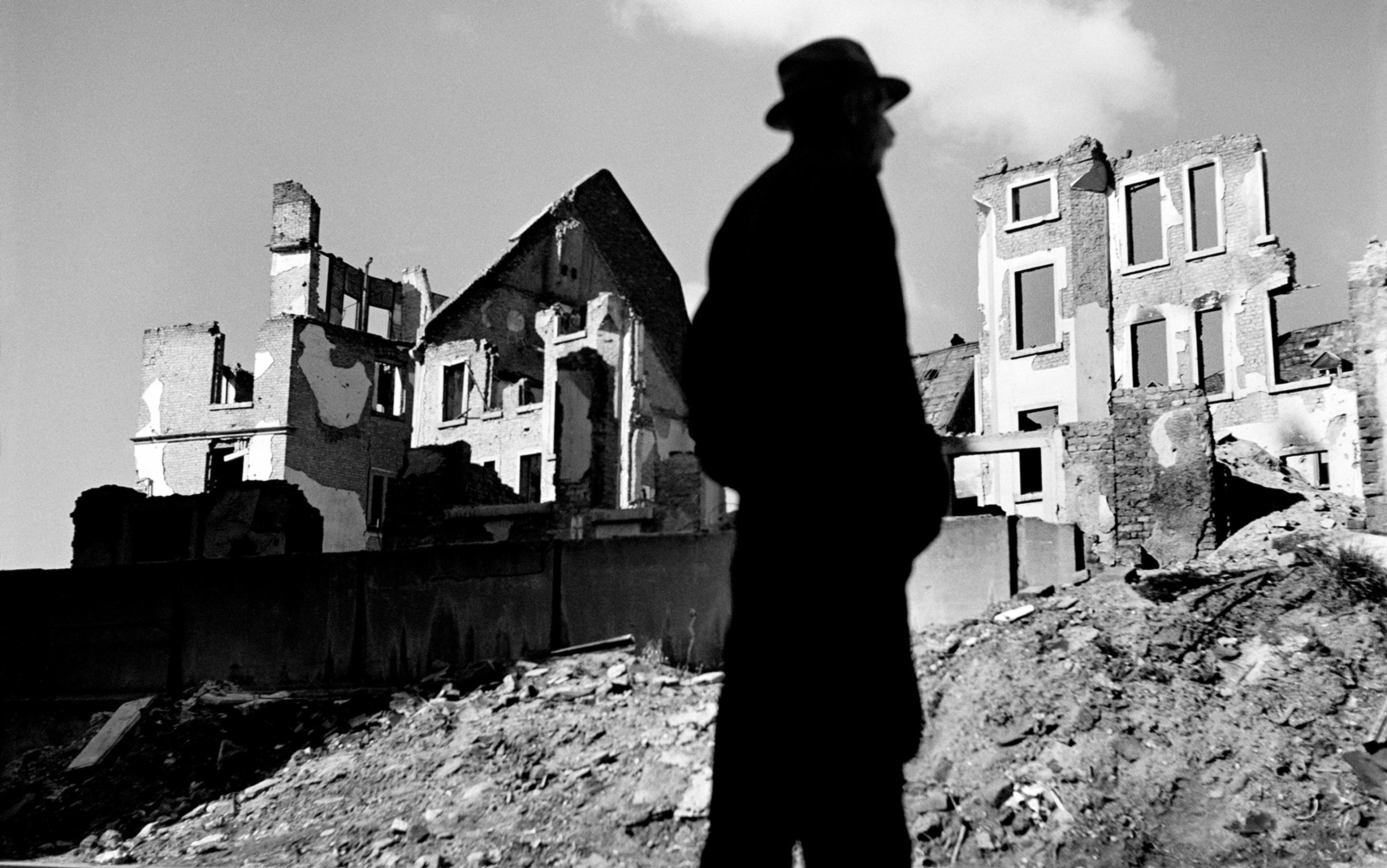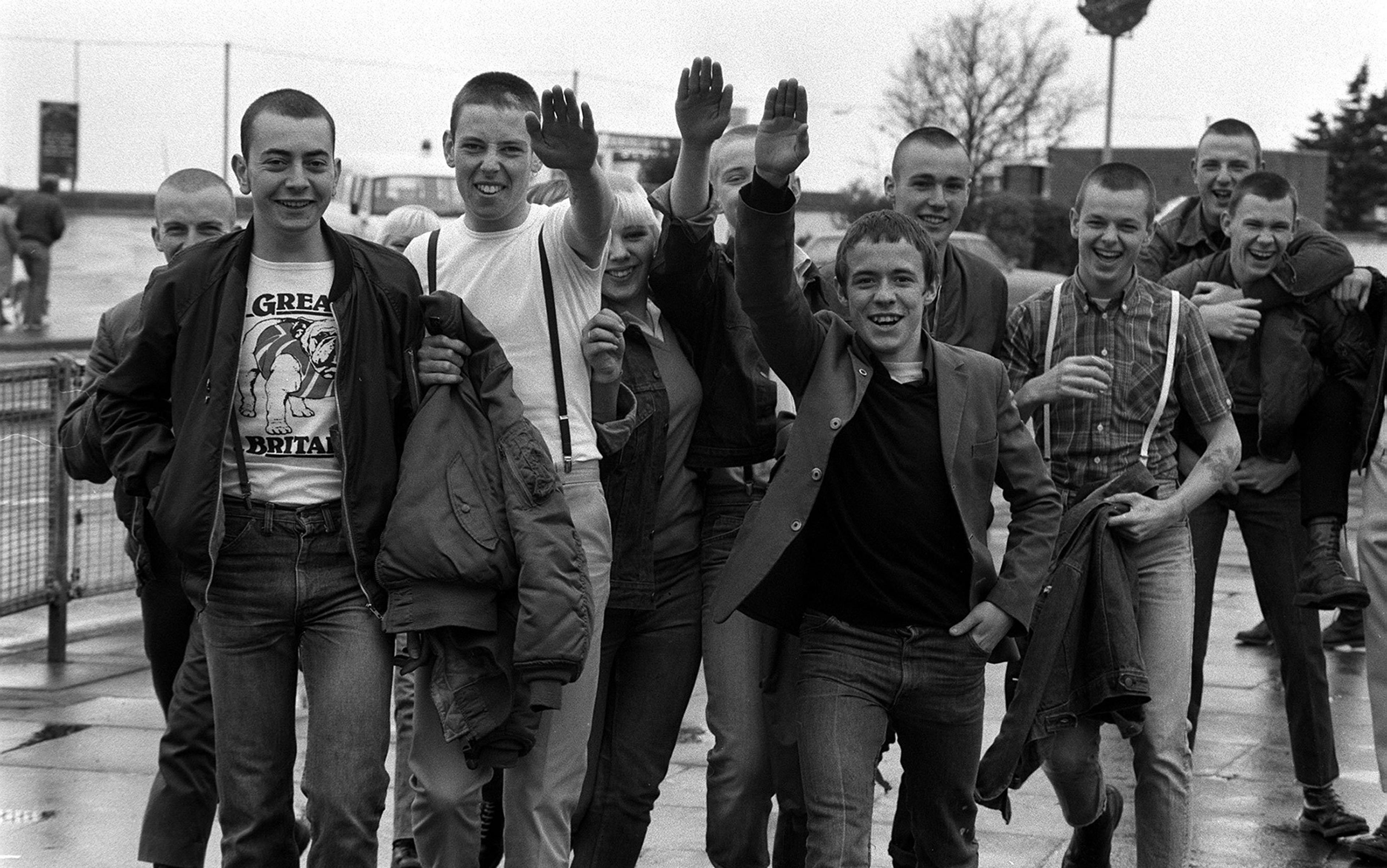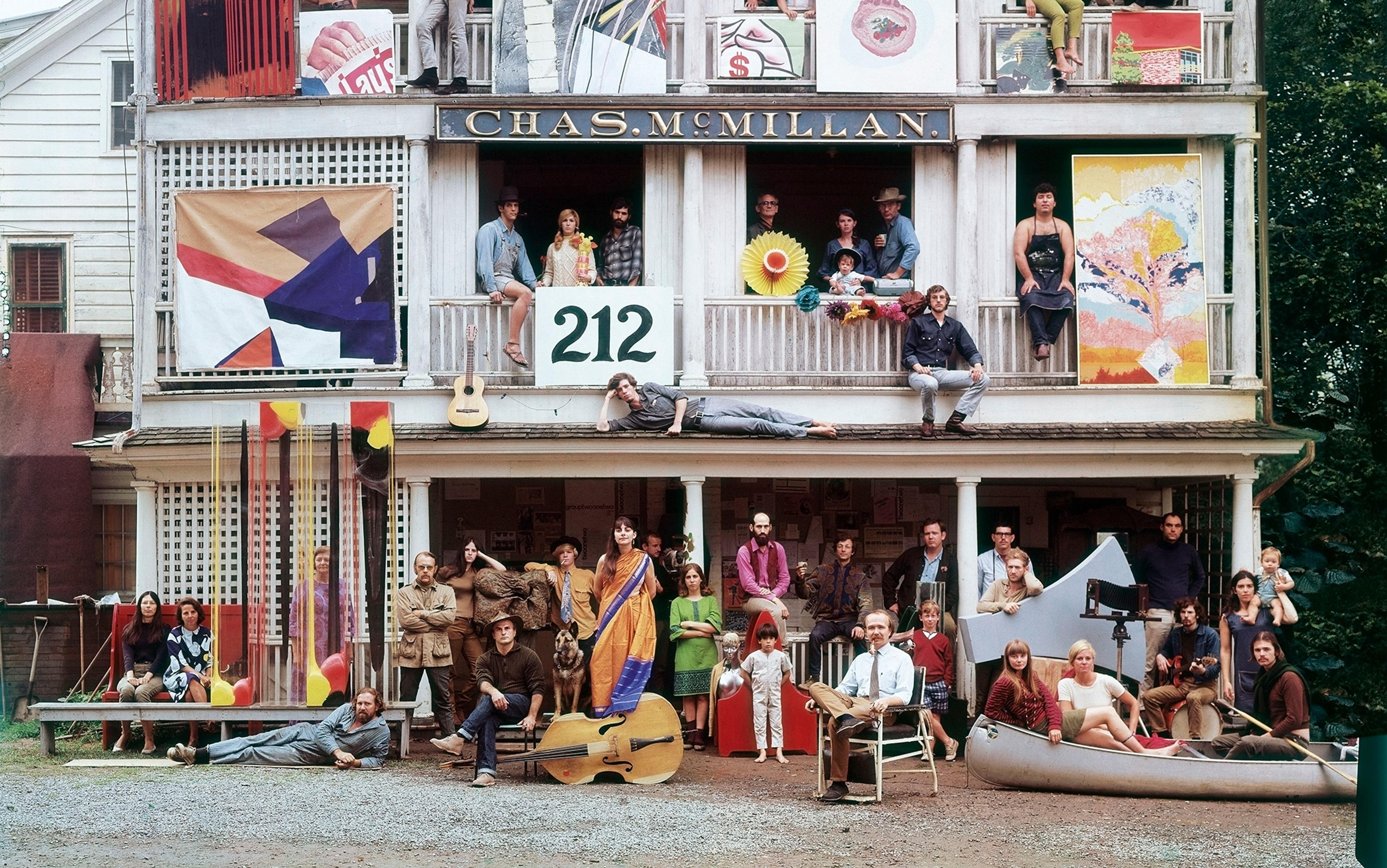In early 1942, a slim book appeared in London under the title Underground Europe Calling. Its author was the Austrian refugee Oscar Pollak. ‘Underground’, the introduction begins,
has become a catchword, handled by the tabloid press, flashed by the films. Imagination colours it with all the thrills of romance. In actual fact, underground work is quite different. It is terribly slow and wary. It is painstaking drudgery on the edge of prison and death. The catacombs are romantic only when you look down into them from the bright day above: inside they are dark, narrow and chilly – and very uncomfortable to live in. Yet their oppressive gloom holds the hope of future light.
Pollak was trying to pinpoint where the antifascist resistance was playing out across Europe during the Second World War. His vision combined physical areas under the earth – basements and bunkers and bolt-holes – with the secret social spaces that resisters occupied above ground. Pollak’s notion of insurgency blended the light of emancipation with the darkness of deceit, yielding a galvanising mythos of the ‘underground’.
In our own time, the idea of resistance has a renewed urgency and appeal. But we won’t be able to fight a fresh wave of authoritarianism without appreciating the symbols that animated the antifascist imagination of the past. The symbol of the underground has very deep roots in European and US culture, but over the course of the 20th century it was transformed from a threatening zone of subversion into a liberating space of political resistance. This shift of location and moral valence was partly a matter of necessity. Fascist regimes brutally suppressed public displays of defiance such as protest marches, critical publications and civil disobedience, so resistance was forced to retreat into the private sphere. Antifascists adopted aliases, worked cover jobs, communicated in code, and took covert photographs, all the while maintaining the appearance of ordinary lives.
These were more than just conspiratorial techniques. The resistance relied on an imaginative vocabulary that connected dissidents to one another via a network of subterranean passageways, snaking beneath the surface of everyday interactions. Being underground meant an ethics of spying, subversion, and subterfuge; of dissimulation and double-crossing; of cloak-and-dagger and conspiracy. Ironically this duplicity helped people see things for how they truly were. A buried world, hidden from the state, created forms of solidarity and self-understanding that shaped what was politically possible.
Is there anywhere left to hide today? Government surveillance, smartphones and social media have made our private lives increasingly public. The solipsistic cult of consumerism and convenience encourages us to spend away our cares, while alliances across social boundaries seem increasingly elusive. Where we’ve arrived charts just how far the idea of the underground has shifted in the public imagination, from a symbol of freedom to a hollowed-out token of postwar counterculture, buffeted by the tides of postmodernism and embraced, ambivalently, by 21st-century digital activists. The notion of the underground has come full circle, back to its origins as a space of conspiratorial activity that corrodes the public good. Joining an underground army is scarcely imaginable or desirable for most of us. And that’s a major problem for any would-be antifascists.
The concept of a subterranean realm dates as far back as Hades, the underworld of classical mythology. Homer describes how Odysseus journeyed to this land of death, a ‘shadowy hall’ in ‘the dark earth’. Later, Plato’s Republic featured a similar pattern of descent and redemption in the allegory of the cave – after which Dante, in The Inferno, swapped Hades for a Christian Hell, and Plato’s philosopher-king for the poet himself.
Modern visions of the underground diverged from their origins in the ancient and medieval worlds. The shock of industrialisation in the 19th century politicised the metaphor and made it more human, as people flocked to subterranean occupations such as coalmining and subway construction. The US critic Wendy Lesser calls this ‘technological downward progress’: activities where workers’ pride in broaching new telluric frontiers blended with the fear and fascination of ancient myth. ‘Old ideas which had been attached to fantastic tales now gained association with actual places one could touch and see,’ she wrote in The Life Below Ground (1987).
In this way, underground enterprise expanded the Western cultural imagination about what humans might achieve and where they might go. It also gave birth to the new literary genre of science fiction. Jules Verne’s novel Journey to the Centre of the Earth (1864) follows a scientific expedition on its descent into an Icelandic volcano. Deep within the Earth, the protagonists discover a vast subterranean ecosystem of rivers, oceans, flammable gases, large insects, mastodons, and a race of giant humanoids. A similar sunken civilisation appears in H G Wells’s The Time Machine (1895) as the dwelling of the nefarious Morlocks, while Gabriel Tarde’s dystopian novel Underground Man (1896) depicts a scenario in which catastrophic climate change freezes the Earth’s surface and forces humans to create a new habitat below the soil. ‘Let us descend into these depths; let us make these abysses our sure retreat,’ one character declares. ‘It is time to follow Empedocles, Ulysses, Aeneas, Dante, to the gloomy abodes of the underworld, to plunge mankind again in the fountain from which it sprang, to effect the complete restoration of the exiled soul to the land of its birth.’ In the 19th-century imagination, this underground world would prove humanity’s salvation.
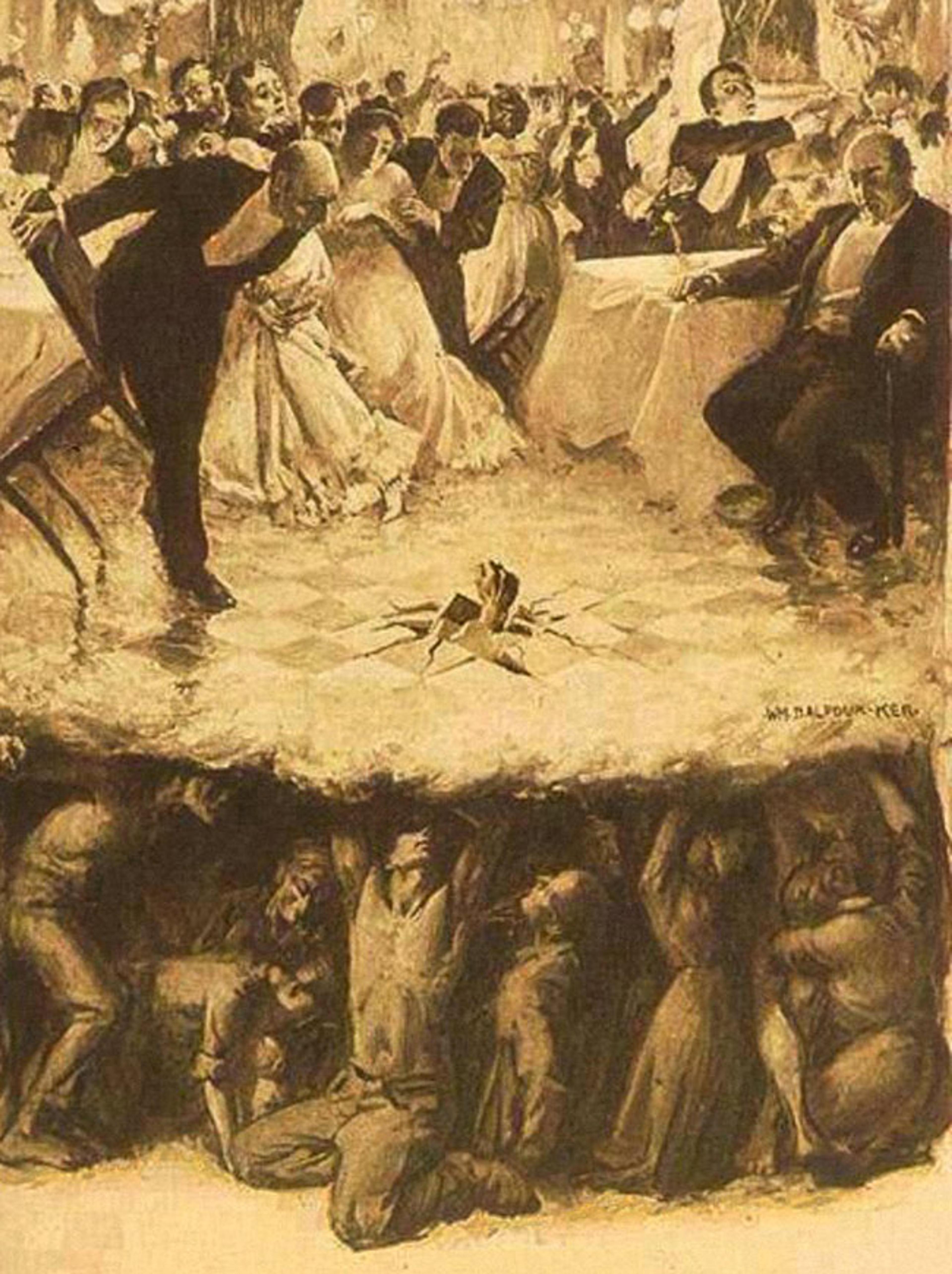
Wiiliam Balfour Ker’s drawing ‘From the Depths’. Courtesy Library of Congress
The idea of life underneath the Earth’s surface cast the class structures that stratified the world above into vivid relief. Victorian novelists such as Charles Dickens unearthed and exposed the degradation of poor people living in slums and working in wretched conditions. Other writers produced sensationalist literature about criminal underworlds that had been hidden from the gaze of the newly respectable urban middle-class. In an explosive series of articles in 1885 entitled ‘The Maiden Tribute of Modern Babylon’, The Pall Mall Gazette precipitated a moral panic about young English girls being secretly lured into a life of prostitution and slavery – likening their plight to the mythological sacrifice of virgins to the Minotaur in the maze of Crete. These licentious tales were probably apocryphal, but they show how a spatial sense of what was ‘invisible’ and ‘below’ shaped the class identities of the bourgeois and the proletarian. You see another version of this social imagery in William Balfour Ker’s drawing ‘From the Depths’ (1906), in which a shirtless worker rises up from the shadows below to drive his fist through the floor of an elegant banquet above.
The Tsarist police nicknamed one secretive group ‘the troglodytes’ – the Greek word for creatures dwelling in holes
In antebellum America, subterranean metaphors channelled powerful political sentiments in the form of the Underground Railroad – the secret web of escape routes used by runaway slaves. The radical abolitionist John Brown wanted to build a militarised highway that would cut through the Appalachian Mountains – an under-and-overground route that could offer swift and reliable passage for slaves from the South. (It never happened.) Colson Whitehead’s novel The Underground Railroad (2016) imagines the network as an actual subterranean railway, where fugitives wait on a platform, never knowing when the next train will arrive or where it will go. In steampunk style, Whitehead describes a ‘gigantic tunnel’ whose tracks ‘ran south and north presumably, springing from some inconceivable source and shooting toward a miraculous terminus’.
However, it was in Europe that the symbol of the underground became definitively fused with political resistance. Revolutionary movements abounded in the 19th century, from the progressive Carbonari in Italy to the socialist Blanquists in France. But underground tactics were most developed in Tsarist Russia. In the 1860s, radical students in Moscow and St Petersburg began to form small insurgent organisations that came under intense police surveillance. This milieu was the setting for the populist novel What Is to Be Done? (1863), written by the philosopher and revolutionary leader Nikolai Chernyshevsky and featuring a character so committed to the cause that he sleeps on wooden planks and a bed of nails to toughen himself up for the struggle. Fyodor Dostoyevsky went on to satirise Chernyshevsky’s earnest agitprop with the paranoid, unreliable narrator of his experimental novella Notes from Underground (1864).
In 1875, the Tsarist police nicknamed one secretive group ‘the troglodytes’ – the Greek word for creatures dwelling in holes. The Russian troglodytes eventually went into exile and shared their underground methods and identity with radicals throughout Europe. When the Bolsheviks took power in Russia in 1917 and communist parties began to proliferate abroad, the practice of ‘going underground’ expanded well beyond fringe politics. Members of the Communist International were required to establish in their home countries ‘a parallel organisational apparatus which, at the decisive moment, can assist the party to do its duty to the revolution’. These underground cells would incubate revolutionary ideas and habits until the ‘objective conditions’ for revolution were ripe.
Western publics panicked at the prospect of a global communist uprising. The first ‘red scare’ in the US in 1919 to 1920 conjured up the communist movement as a hidden existential threat that wormed away at the core of democracy. But the rise of fascism fundamentally altered public perceptions of the underground – transforming it from a site of sabotage into a source of profound emancipatory potential.
From the 1920s onwards, progressive politics operated in a subterranean mode. During the Second World War, prominent refugees popularised the idea of a unified ‘Underground Europe’, and urged the French, British and US publics to look for hidden allies in the battle against Mussolini and Hitler. The message was simple: contrary to the claims of the fascist propaganda machine, a mass of courageous Europeans was fighting for freedom from authoritarian oppression.
For example, the Free World Association, a socialist refugee group based in New York, published a pamphlet called How the Underground Fights Back (1942). Millions of ordinary men and women, it began, were preparing to make ‘a supreme sacrifice to the cause of independence and freedom’. French, Belgian, Czech, Polish and even German undergrounds communicated with each other on a regular basis. Working as a fifth column, this hidden European network would hasten an Allied victory: ‘the Underground is softening the ground, preparing it for the great invasion of the Allies, threatening the enemy from the rear … The Underground is preparing itself to write the final chapter of the great and glorious history of human revolt against tyranny.’ The fate of Europe, the story went, was tied to the underground’s ability to strike at the heart of fascism.
Some commentators in the US continued to point to the spectre of a clandestine Nazi underground. But the metaphor increasingly applied to the antifascist struggle, which became known as the Resistance. The underground’s dim chambers began to glow with romantic attraction. Progressive discourse portrayed the underground as a space of democratic freedom, popular agency, and – crucially – legitimate power. Two decades later, the German theorist Carl Schmitt argued that this shift in narrative marked the climax of an irregular form of partisan politics, in which it became normal to destabilise the territorial sovereignty of the modern state.
The reality, of course, didn’t quite match the myth. Historians have long debated just how many Europeans took part in the Resistance. Estimates vary hugely, but the true numbers certainly don’t come anywhere near the figure of ‘100,000,000 Allies’ touted by the title of one popular book from 1940. Yet the Western media were still inundated with subterranean imagery. Books appeared with titles such as Germany Beneath the Surface (1940), Volcano Under Hitler (1941), Paris-Underground (1943), and The Silent War (1943). Hollywood produced agitprop films such as Underground (1941) and Underground Agent (1942).
The journalist Curt Riess – a refugee from Nazi Germany who went back as a US war correspondent – noted the similarities between these chronicles of Underground Europe and the heroic romances of the Middle Ages. Both movements began as oral traditions that mixed reality and myth, fact and fiction, to profound political effect. These half-invisible heroes, he wrote, were ‘just as real as the stories in which they figure are true – just as true as the sagas of ancient times’. One of his underground idols was the legendary Czech freedom-fighter Jan Smudek, who inspired the character Victor Laszlo in the film Casablanca (1942). A myth had emerged among antifascists abroad – one whose power seemed to grow in inverse proportion to the prospects of genuine resistance, which diminished as the war intensified.
So thoroughly had the underground defined the dissident’s personality that a return to civilian life seemed tragic, even after victory
Not everyone agreed with the value of this crypto-factual portrayal of the underground, however potent and inspiring it might be. The Polish émigré Jan Karski, whose oral testimony provided one of the earliest reports of the Holocaust, preferred to rely on fidelity to detail and the authority of the truth to compel action. In his book Story of a Secret State (1944), he tried to drum up support for the Resistance by offering detailed descriptions of Poland’s quasi-official ‘Underground State’. On the surface, he wrote, one could see the ruins of Polish society after it had been ravaged by successive occupations. But beneath lay a complex infrastructure consisting of the Home Political Representation; the Council of National Unity; the Home Army; the Temporary Governmental Administration; the Directorate of Underground Resistance; and, in the lower depths, legions of independent partisans and civilian saboteurs. This underground state surfaced during the Warsaw Uprising that began in the late summer of 1944 – and its demise presaged the end of Underground Europe, as the war ground to a close.
The reality of life underground gave rise to a certain melancholy. After the war, the political theorist Hannah Arendt, a Jewish refugee from Germany, wrote about the inevitable gloom that accompanied the conclusion of antifascist resistance. As erstwhile partisans were ‘thrown back into what they now knew to be the weightless irrelevance of their personal affairs’, she wrote in Between Past and Future (1961), they were forced to confront the ‘“sad opaqueness” of a private life centred around nothing but itself’. So thoroughly had the underground defined the dissident’s personality that a return to civilian life seemed tragic, even after victory.
The threat of fascism in Europe waned after 1945, and pragmatic debates about economic and political reconstruction began. Subterranean symbolism now seemed obsolete. In Eastern Europe, after all, the underground was allegedly in power. Antifascism was now the hegemonic ideology of Soviet imperialism. As the world divided into Cold War camps, the notion of resistance seemed to wither – and with it, the imagery of the political underground.
The ideal of emancipation eventually found a new home: in the counterculture of the 1960s and ’70s. Many French intellectuals, such as Albert Camus, had fought in the Resistance. After the war, they went on to popularise the underground as a realm of existential revolt. Camus saw the dissident as an archetype of humanity, rising up against ‘the spectacle of irrationality’ presented by the absurdity of our condition. ‘Insurrection is certainly not the sum total of human experience,’ he wrote in The Rebel: An Essay on Man in Revolt (1951). ‘But history today, with all its storm and strife, compels us to say that rebellion is one of the essential dimensions of man.’
French existentialism, in turn, touched the US beat generation. In the words of the writer Jack Kerouac, his peers venerated their own ‘subterranean heroes’ – the hepcats, hipsters and beatniks. In 1965, Lou Reed and friends renamed their band The Velvet Underground, inspired by the name of a sensational book about sexual subcultures in the US. Sex, drugs, rock and roll – and, occasionally, radical politics – characterised the underground scene from London to San Francisco. The term was something of a paradox: one previously went underground precisely not to be seen. But now the descent had become a performance, a costume drama whose script was written in advance.
Shallowness came to trump profundity. As the underground imagination atrophied, the space for political action narrowed
The countercultural underground was really a second-order metaphor: its imagery and self-understanding mimicked the already metaphorical world of antifascism. But instead of struggling for democracy, the youth conceived of itself and its own self-realisation as the goal of collective action. The underground of beatniks, Provos, hippies, Situationists and students saw themselves as an illegal organisation that subverted and corroded society. But they also made up a counter-society of their own: counter-schools, counter-communes and counter-businesses. This alternative world went mainstream in the ensuing decades, spreading an ethos of individualism and subjective self-expression.
The postmodern turn that began at end of the 1970s marked a partial fulfilment of these aspirations. Its intellectual critique of universal norms of morality and traditional values sat comfortably with the ideals of the counterculture. But the new, postmodern picture of the world was surprisingly flat – a symptom of what the literary critic Fredric Jameson called ‘a new depthlessness’. Its intellectual sages, such as Gilles Deleuze, Félix Guattari and Jean Baudrillard, seemed obsessed with surfaces – plateaus, simulations, spectacles, mirrors, virtual reality. Their denial of foundational truths led them to reject what Jameson saw as the modernist models of depth: Marxism, Freudian psychoanalysis, existentialism and semiotics. Shallowness trumped profundity. And, just as the distinction between surface and depth was collapsing, so too were class identities levelling out into an undifferentiated ‘middle class’. As the underground imagination atrophied, the space for political action narrowed.
The Roman historian Tacitus once referred to the arcana imperii, or secrets of power – all of the important decisions that get made behind the scenes, out of the public eye. This is the only version of the political underground that really registers anymore in Western consciousness. The metaphor has returned to its origins as a site of destruction and instability: from Right-wing rants against terrorist conspiracies and establishment ‘insiders’, to the Left’s worries about the dark multiverse of alt-Right media. But the emancipatory underground – a protective shelter for oppressed peoples – has seemingly vanished.
The antifascist resistance needs to reclaim the notion of an imaginary underground. The metaphor allows individuals to embody a powerful kind of split consciousness, and it shatters the myth of homogeneity that any totalising regime seeks to implement. As the German-American philosopher Herbert Marcuse observed, life under advanced capitalism tends to produce one-dimensional individuals who practise a flat, two-dimensional politics: power spreads across a geometrical plane that equalises all potential contenders, and requires that they play according to the same rules. But the underground adds a third dimension. It is a way to opt out and disappear from the matrix of coordinates that define political space. This is part of what the black lesbian feminist writer Audre Lorde meant by the slogan: ‘The Master’s Tools Will Never Dismantle the Master’s House’ (1983).
In the darkest times, only in the underground’s oppressive gloom can we nurture the hope of future light
The 21st century’s cramped dialectic of privacy and publicity has, however, produced something unexpected: a shadowy half-world of digital hackers and coders. The Anonymous collective subverts surveillance technology through a series of dark nets and hacks. Its politics are anarchic, fragmented and ethically ambiguous, but such groups might be the only hope for genuine resistance. The reach of neo-fascist regimes in this century extends far beyond the nation-state. Exile might no longer be an option, as it was for dissenters in the 1930s and ’40s. By concealing identities and opening backdoors to power, a renewed digital underground could be the only way for antifascist resistance to survive.
Still, we should be on guard against the utopias of transparency promoted by today’s digital evangelists and entrepreneurs. Antifascist resistance means opacity, evasion and assaults from the shadows. As Oscar Pollak observed in 1942, in the very darkest of times, only the tenebrous tunnels of the underground can preserve hope for a brighter future.
